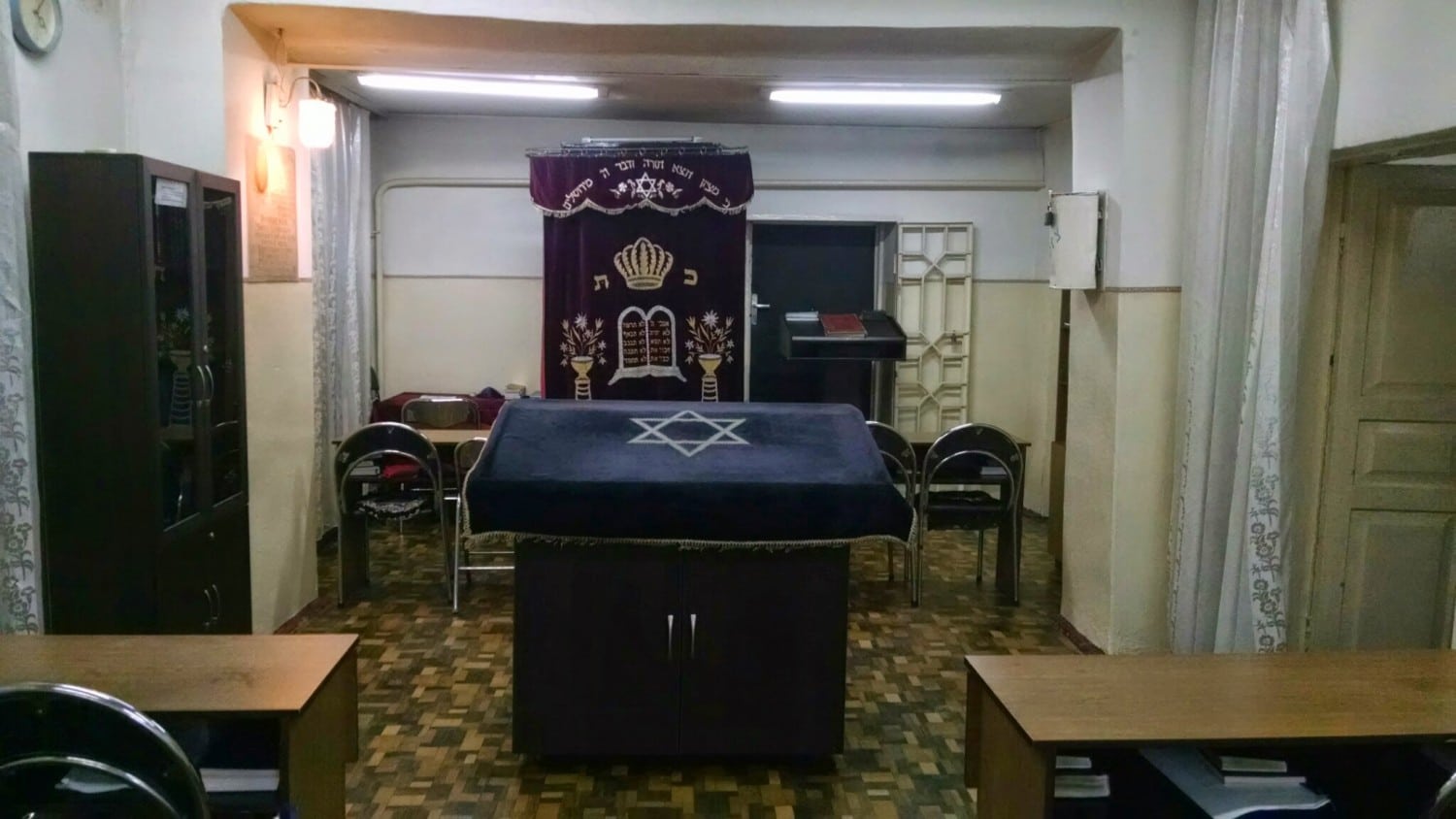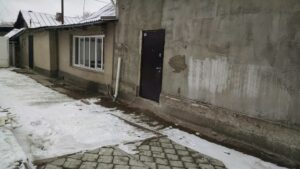Though the concrete details of Jewish presence in the area of Kyrgyzstan itself is largely unknown before the Soviet Union, Bukharian Jews have resided there since the 4th century. In the modern day, the population of Jews in Kyrgyzstan is estimated to be approximately 500 with most located in Bishkek.
For visitors and locals alike, there are two locations for gatherings of the Jewish community. First is the Menorah Center, supported by the American Jewish Joint Distribution Committee (JDC), and provides many educational and cultural activities. Next, there is an active Chabad center in Bishkek, referred to as the Jewish Community of Bishkek. Other cornerstones of Jewish life include Pri Etz Chaim, a Jewish day school with approximately 100 enrolled students, the Hesed Tikva Jewish Charitable Fund, and the monthly Ma’ayan newsletter. In short, while the text below was originaly written in 2015, all of it still holds true and Bishkek’s Jewish community continues to meet and celebrate their faith in much the same way as before.
Also unchanged is that, unfortunately, there are still no specialized kosher restaurants or marked kosher products in Bishkek, but students in the past have reported following “kosher style”, consisting of adhering to as many kosher rules as possible while still being able to have an adequate quantity of options (considering availability and price). For example, not mixing meat and dairy, not eating pork or shellfish, or any level of observance that best suits you and your needs.
While Bishkek’s Jewish community is small, they welcome visitors with great warmth and will strive to assist you with your needs in order to ensure that you feel at home during your stay. The Rabbi welcomes emails from future visitors and is happy to address any questions.
– Introduction by Nya Feinstein, 2024, based on email conversations with Rabbi Raichman in Bishkek
Historical Background
Jews have inhabited the region that is now Kyrgyzstan since at least the 6th century, when archeological evidence suggests that Jewish traders arrived here via the Silk Road from Khazaria, a Turkic kingdom in present-day Eastern Europe. These earliest traders spoke Aramaic, and established communities in Osh, Balasagun, and Uzgen (cities in what is present-day Kyrgyzstan). Jews are also mentioned in the Kyrgyz Epic, Manas, which likely dates to at least the 10th century. Later, the Jewish population was comprised mostly of Bukharan Jews, one of the oldest ethnic groups in Central Asia.
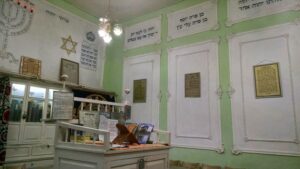
By the beginning of the 19th century, there were about 19,000 Jews living in Central Asia. Most lived in the Emirate of Bukhara and the Khiva and Kokand Khanates, and spoke Persian or Bukhori, a Jewish dialect of Tajik-Persian. The Bukharan Jewish population had been practicing in the Sephardic tradition since it was introduced to them in the late 18th century. “Sephardic” technically denotes Jews whose ancestors were among those living in the Iberian Peninsula before the 1492 Edict of Expulsion, but the term is often used to refer to other Jewish communities who follow Sephardic tradition. Ashkenazi Jews, who have roots, by contrast, in Central and Eastern Europe, arrived in Central Asia in the late 19th century. They came from the Russian Empire as it expanded into the region. Some were cantonists – boys forcibly conscripted into the Imperial Army and pressured to convert to Orthodoxy. In 1896, Jews made up 2% of the population in the region of Kyrgyzstan.
In Osh, Ashkenazi Jews tended to live in the newer part of the city inhabited by Russians and Tatars. Sephardic Jews lived in a section of the old city, where their homes, clothing and cuisine more closely resembled that of their Muslim neighbors. Religious necessities like Torah scrolls and tefillin came to Osh from Bukhara, though there were some local publications of Jewish texts, with commentaries written in local dialects. There were no synagogues – people prayed in rabbis’ homes – but a Jewish cemetery was established near the city in the 1880s. By 1900, according to census data, there were 800 Jews living in Osh, and 250 in Bishkek.
With the start of World War I more Ashkenazi Jewish immigrants arrived from the Russian Empire, some of whom were political exiles. Unlike the Ashkenazim, Sephardic Jews were included among the “non-Slavic” nationalities conscripted and sent to the battlefronts. Some fled to Afghanistan. At a time when local populations were rebelling against the Imperial Army, Sephardic Jews were regarded and accepted as anti-Russian by the Muslim opposition, while Ashkenazim were grouped with recent settlers supportive of the Russian Empire. In 1916, still more Ashkenazi Jews arrived in Kyrgyzstan when some of the many thousands of Jewish POWs and refugees from Germany and Austria were sent there.
After the Russian Revolution in 1917, Jewish political activists, many of them Communists, settled in Kyrgyzstan, and some were involved in local city soviets (councils). A Jewish-run institute, established by the local Ministry of Education, opened primary schools teaching Bukharan Jewish dialects, and worked on transliterating Jewish texts into Cyrillic. Hundreds of books were published in Bukhori in major cities (Bishkek, Osh, and Jalal-Abad).
During World War II, Kyrgyzstan witnessed an enormous influx of Jewish refugees, evacuated from Nazi-occupied territories of the Soviet Union. The Jewish Theater of Warsaw, along with famous actress Ida Kaminska, was evacuated to Kyrgyzstan during the war as well, where the company performed in Yiddish, Polish, Ukrainian, and Belarusian until its return to Poland after the war. Thanks to the refugee population, Jews numbered more than 40,000 on Kyrgyzstan’s territory during the 1940s, though many left after the war for Israel or their native countries.
A public synagogue was permitted to open in Bishkek for the first time in 1941 in the city center. Kosher shops appeared in the neighborhood of the synagogue. In 1945, the city’s Jewish community received official recognition. Seventy congregants attended the synagogue daily, with 200 people gathering on Shabbat, and 2,500 on High Holidays. Though primarily Ashkenazi, the synagogue held Sephardic services as well. In the early 1950s, major holidays were permitted to be celebrated openly for the first time. Jews made up 3% of Bishkek’s population.
The Jewish population of Kyrgyzstan diminished steadily after World War II. Of the 6,900 remaining in the Republic in 1970, 5,700 resided in Bishkek. Ashkenazi Jews vastly outnumbered Sephardim. Beginning in 1989, and continuing throughout the first decade of post-Soviet Kyrgyzstan, almost 5,000 Jews immigrated to Israel (including more than 1,000 in 1990). Jews made up .03% of the country’s population in 2001.
The Jewish community of Bishkek was without a rabbi for the first decade after the collapse of the Soviet Union, and practicing Jews gathered in the synagogue without formal leadership. In 2000, Chabad-Lubavitch (an Orthodox, Hasidic movement) sent Arie Raichman, a Belarus-born rabbi’s assistant in Tashkent, to Bishkek to lead the community. Since his arrival, a Jewish kindergarten has been established, a community newsletter is published monthly, and around 20 people attend services on Shabbat, with more coming to the synagogue on High Holidays.
The community faced violence during and after the political unrest and Second Revolution in 2010. Anti-Semitism had rarely reached violent or even public levels in the region before a banner was hung near the presidential palace in 2010, blaming the instability and corruption on foreign Jews. Molotov cocktails were thrown at the synagogue three times, and a pipe bomb thrown over the synagogue’s gate on September 9, 2010 – the first day of Rosh Hashanah – damaged the building. There were no injuries, as services had not started yet. There were about 1,500 Jews in the country at that point, and at least 12 immigrated to Israel following the bombing. The violence ended with the political unrest later that year, but the synagogue still retains a guard on holidays.
Guide to Jewish Life in Bishkek Today
Census numbers indicate about 500 Jewish citizens in Kyrgyzstan, but Rabbi Raichman thinks there could be as many as 1,500. Most live in Bishkek, with a small population of Bukharan Jews still residing in the Fergana valley.
Synagogue
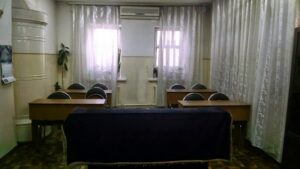
Bishkek’s community is largely secular – only a handful of the city’s Jews attend the city’s one synagogue at 193 Suyumbayev St. (also known as Karpinskii St.). For more on my experience attending, see that section below.
Note that many Google Maps gets the location wrong; it is on Suyumbayev just north of Jibek-Jolu.
Young people are particularly non-observant, and those who are often immigrate to Israel or another country. The synagogue has a daily minyan, however, and about 20 congregants at Shabbat services every Saturday. Students and travelers interested in visiting the synagogue or attending services should get in touch by phone, at the number listed above.
Young Jewish Life
From what I have witnessed, practicing Jews in Bishkek are mostly of older generations. There are usually about three women at services (usually over sixty years old), and perhaps fifteen men, who also mostly appear to be between sixty and eighty. I have heard fascinating things from the older women about how the Jewish community has changed over the years – about the days of home-baked matzo (now matzo comes in from Almaty, Kazakhstan), of little kosher shops, and a larger Bukharan population.
My insights about Judaism among the youth in the post-Soviet generation come mostly from my friend Masha, a university student who rarely attends synagogue but considers her Judaism an important part of her identity. Her grandmother was born in Poland and spent much of her childhood in Ukraine. Just before World War II, she and her family moved to Bishkek, where she later became a surgeon. In Masha’s family, Judaism takes the form of gathering with family members for certain holidays, and frequent visits with Jewish friends of her mother during Masha’s childhood (they all live in Israel or Russia now). She, her mother, and her grandmother don’t eat pork, but otherwise they do not observe kashrut. Masha also attended Jewish Sunday school throughout her childhood, which she enjoyed. Like me, she can read Hebrew words but can’t understand them. She knows songs, dances, and stories associated with the holidays. Masha expects that so few Jews are observant here in part because of how difficult it would be to observe Jewish laws in Bishkek.
I asked Masha about anti-Semitism, and any difficulties associated with being Jewish here. She described an undercurrent of negativity: friends teased her and another Jewish student in school, though she has had no problems in university. Jokes about Jews are common, she said, and people see nothing wrong with them.
Keeping Kosher
Most people I have asked about the possibility of keeping kosher in Bishkek have told me it would be nearly impossible. However, according to conversations I’ve had here, and to the helpful list I am copying below, from Jacob Kaufman’s SRAS article about Jewish Moscow, goods like produce, pasta and nuts can be bought anywhere.
From Jacob’s Guide to Jewish Moscow: “As for buying kosher food, here is a rough guide that is by no means comprehensive or authoritative. Consult with a local Russian rabbi for details. The following are kosher without any special supervision:
• raw fruits and vegetables
• dried fruits (save raisins) and nuts
• pure fruit juices (save grape juice)
• uncooked pasta containing only flour and eggs
• plain vodka and beer, coffee and tea
This list contains items that do not bear a hechsher but are nevertheless kosher.”
I have been able to maintain a vegetarian diet in Bishkek without too much trouble. I am hardly an expert on this subject, but depending on how strictly you observe kashrut, you may be able to make it work here. It may become even easier in the future: Rabbi Raichman told me that after construction is finished on a new portion of the synagogue, a formerly operating Kosher “soup kitchen” will likely be active again, serving Kosher food there daily.
Education
Pri Etz Chaim, the city’s Jewish Day School, has about 80 students. The school teaches Jewish history, Hebrew, and Kyrgyz language and literature in addition to the state curriculum. It is funded by World ORT, an international Jewish education NGO.
The Menorah Society of Jewish Culture, supported by the JDC (American Jewish Joint Distribution Committee), directs a Sunday school. There are about thirty students – small children to sixteen-year-olds – in the school. Volunteers from the Menorah Society teach Jewish history, Hebrew, and Torah. Children celebrate holidays, and learn Jewish songs and dances.
Cemeteries

Unlike in Osh, there has never been a separate Jewish cemetery in Bishkek. There are, however, Jewish sections in more than one cemetery in the city. I visited Ala-Archa Cemetery, a large Muslim cemetery near Osh Bazar, since I had been told there were Jewish graves there. I was barely more optimistic about finding them among the many hundreds of gravestones, though, than I had been about finding the synagogue on Suyumbayev Street. But in the last corner of the cemetery I traipsed to across the snow, I all at once found myself surrounded by Stars of David and Jewish names. Most stones there date from 1940 to 1960. Round photographs and portraits of the dead are on most stones, in the Soviet tradition. Some inscriptions are in Hebrew; most are in Russian. Some stones have toppled over, and many are surrounded by rusty metal gates. It is fascinating, but like the synagogue, the Jewish burial ground is virtually invisible to all but those who are looking for it.
Culture

Since 2000, the Jewish community of Bishkek has published a monthly newsletter, Ma’ayan (Мааян). The newsletter, which lies in a stack in the synagogue for the taking, is a rare place to find bits of news about the community in Bishkek – items such as city-wide meetings attended by a member of the community or the death of a community member. Even more articles, it seems, cover news stories in Israel, Russia, and the US.
“Hesed Tikva,” a Jewish charitable organization in the city also supported by the JDC, has a Jewish library at 159 Moskovskaya St. in Bishkek. Bukharan prayer houses are also said to operate independently from the synagogue.
Religious Community
There were perhaps thirty people in attendance at services here on Yom Kippur, the most important Jewish holiday of the year. Most were men, and a few were travelers from Israel. Esther Raichman, the rabbi’s wife, was speaking with them in Hebrew when I arrived. I introduced myself in Russian, and she welcomed me in perfect English. The women were gathered in an unfinished entryway adjoining an unfinished sanctuary – the synagogue is being renovated to more than double in size, and they used the new space to accommodate the larger-than-usual High Holiday congregation. Shabbat services are held in the old half of the building, in a cozy, sunlit room. Women sit outside the curtain-draped doors, at a long table in an adjoining room where everyone gathers for the Kiddush ceremony after services (and also where we broke the Yom Kippur fast with cake, cookies, and fruit).
I felt immediately welcomed at the synagogue, despite being a foreigner and – more worrisome to me before I arrived – not very observant. But, while services are held according to Chabad Hasidic tradition, which is Orthodox, the congregants’ personal practices seem to vary, and I have seen other, non-observant foreigners, as well as non-Jews, welcomed there. There are Russian transliterations tucked into the siddurs for some important prayers. My years of Hebrew school taught me to read Hebrew, though I can’t understand it. The Soviet childhoods of most of the women I have met at the synagogue included no such thing.
It is impossible to be anonymous at a small synagogue like Bishkek’s, where I found that almost everyone remembered my name after my first visit – it wasn’t long before I was affectionately called “наша американка” (our American). It is a lovely place to meet people (albeit much older people, for the most part), and find community. It perhaps shouldn’t be surprising, given the particular history of Bishkek’s Jewish community – a history full of immigrants and displaced people, mixed traditions, and years of widespread secularism – that a non-observant foreigner like me would feel so comfortable at an Orthodox, gender-separated, mostly Hebrew service here. I would likely feel more out of place at an Orthodox synagogue in New York City. But such a synagogue’s Orthodox congregants – or the members of nearly any synagogue in the world, I imagine – would feel comfortable, or at the very least welcomed, at Bishkek’s synagogue, too.
A Personal Experience as a Jew in Bishkek (Fall, 2015)
My experience with the Jewish community in Bishkek began on a weekday evening in September.
I did not really expect to find a synagogue on Suyumbayev Street. I had been following the gradually narrowing road for blocks, eventually across the wide Jibek-Jolu Avenue. On the other side of this thoroughfare, Suyumbayev was sidewalk-less, and full of dips and ruts – I felt suddenly on the outskirts of the city. A plaque with the number 193 was tacked to a brick wall with a solid metal gate in the center, set back from the road by a small lot in which playing children stopped to stare at me as I approached.
The gate was locked. There was nothing to indicate that this was a synagogue, and I debated pressing the buzzer. Then, the metal door swung open and a man in a suit and black hat, with a thick, reddish-black beard, strode out. I asked if there was a synagogue here and he nodded, shutting the gate behind him. We exchanged a few words about who I was, – “You’re from New York and you’re studying in Bishkek?” – and the schedule for the High Holidays. Then he took my phone number and got into a waiting cab. He had introduced himself as Arie. The next time I saw him, Rabbi Arie Raichman was leading a Yom Kippur service, on the other side of the brick wall.
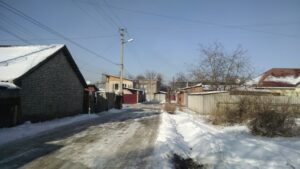
Since finding the synagogue, I have attended Jewish services here more frequently than I ever have in my life. (I would say that I visit a synagogue more often than ever before, but I used to go to the synagogue in St. Petersburg, Russia very regularly to pick up peanut butter at the small shop there.) That is not to say that I go all that often here. It is notable, however – and also not all that surprising to me. My Judaism is in fact one reason that I majored in Slavic Studies in college, and ended up in Kyrgyzstan this year. My great-grandparents spoke Russian and Yiddish when they arrived in the US from various parts of the Russian Empire, in the wake of pogroms in the early 20th century. Neither of these languages was passed down to my parents’ generation. Still, my dad remembers his grandmother reading letters aloud in Russian from relatives back home and translating them at the dinner table on Shabbat. My uncle has kept Russian letters received over the years, some written long after there was anyone left to understand them. When I started college, I wanted to be able to read the letters, and to study a part of the world I felt connected to.
When I studied abroad in Russia my junior year, I felt less connected to Russia than I expected to, but more connected to Judaism. People were excited to hear that my family was from Russia, until they learned that I was Jewish: “You’re not Russian (русская), you’re a Jew (еврейка).” I hadn’t known that русский was an ethnic identity, nor had I considered Judaism my национальность (ethnic nationality) so much as a religious and, to a greater extent in my case, cultural identity. But in St. Petersburg, I felt a surprising sense of belonging among Jewish people in a city where I often felt quite out of place.
I am in Bishkek as I write this, working on my Russian and participating in an SRAS Internship. I anticipated, this time, that I would feel drawn to the Jewish community in Bishkek, and that I might find my Jewishness to be a more defining part of my identity than I have in the US. But I did not expect to feel as comfortable in the Jewish community as I do, despite how little it resembles the community I grew up in. I also knew nothing about the fascinating history to which the now tiny Jewish population here is connected.
You’ll Also Love
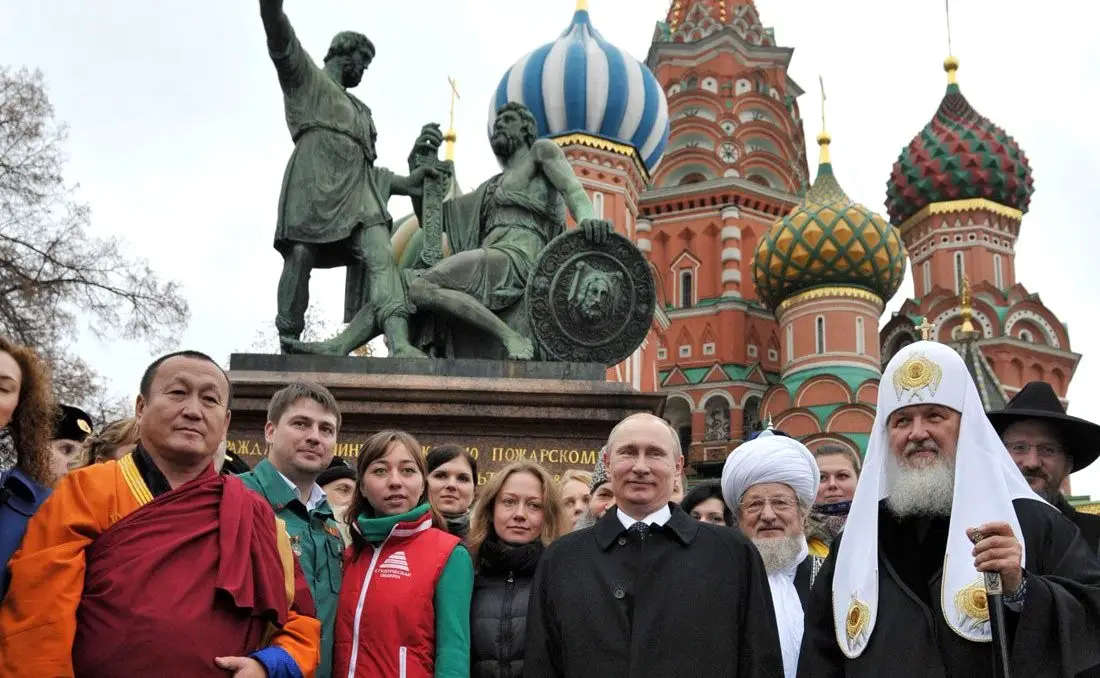
Guide to Religion in Russia
The following resource is meant to quickly but thoroughly overview the subject of religion in Russia. It includes statistics on membership, information on major organizations and institutions, and links to sites offering histories. Mention of religion in other FSU countries is made as well. Your suggestions and comments are always welcome! Contact the Author Table […]
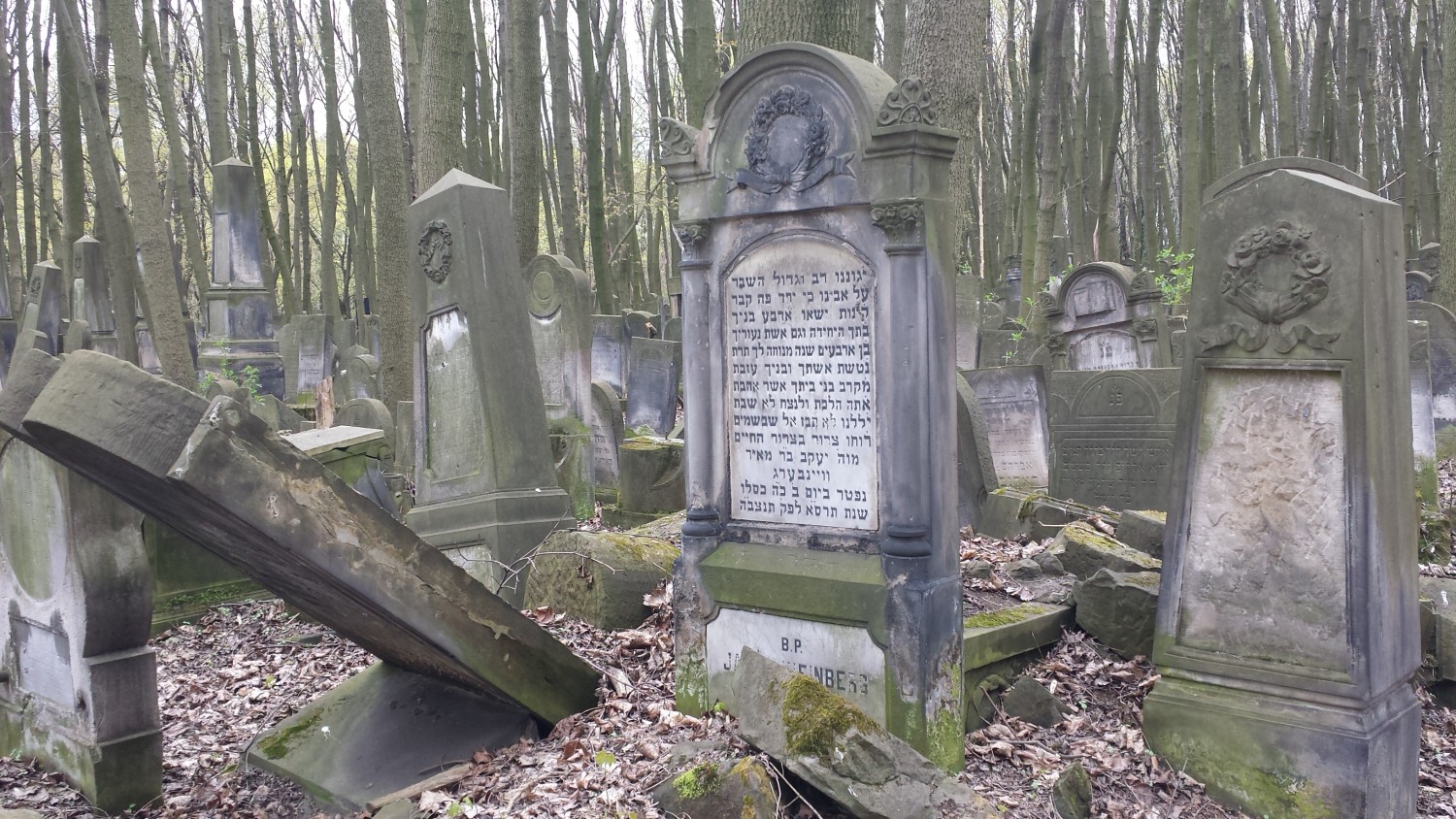
Jewish Cemetery in Warsaw
There are actually a number of Jewish cemeteries in Warsaw, but the one at Okopowa street is by far the largest. At 83 acres or the size of about 63 football fields, it is also one of the largest Jewish cemeteries in Europe and one of the few remaining Jewish cemeteries in Poland still in […]

A Guide to Jewish Moscow
Dear reader, By merit of reading this piece, I assume that you have some interest in Jewish life in Moscow. I came to Moscow June 2012 to study with SRAS’s Russian as a Second Language Program at Moscow State (MGU) without any knowledge of the local community. This list represents the culmination of my observations […]
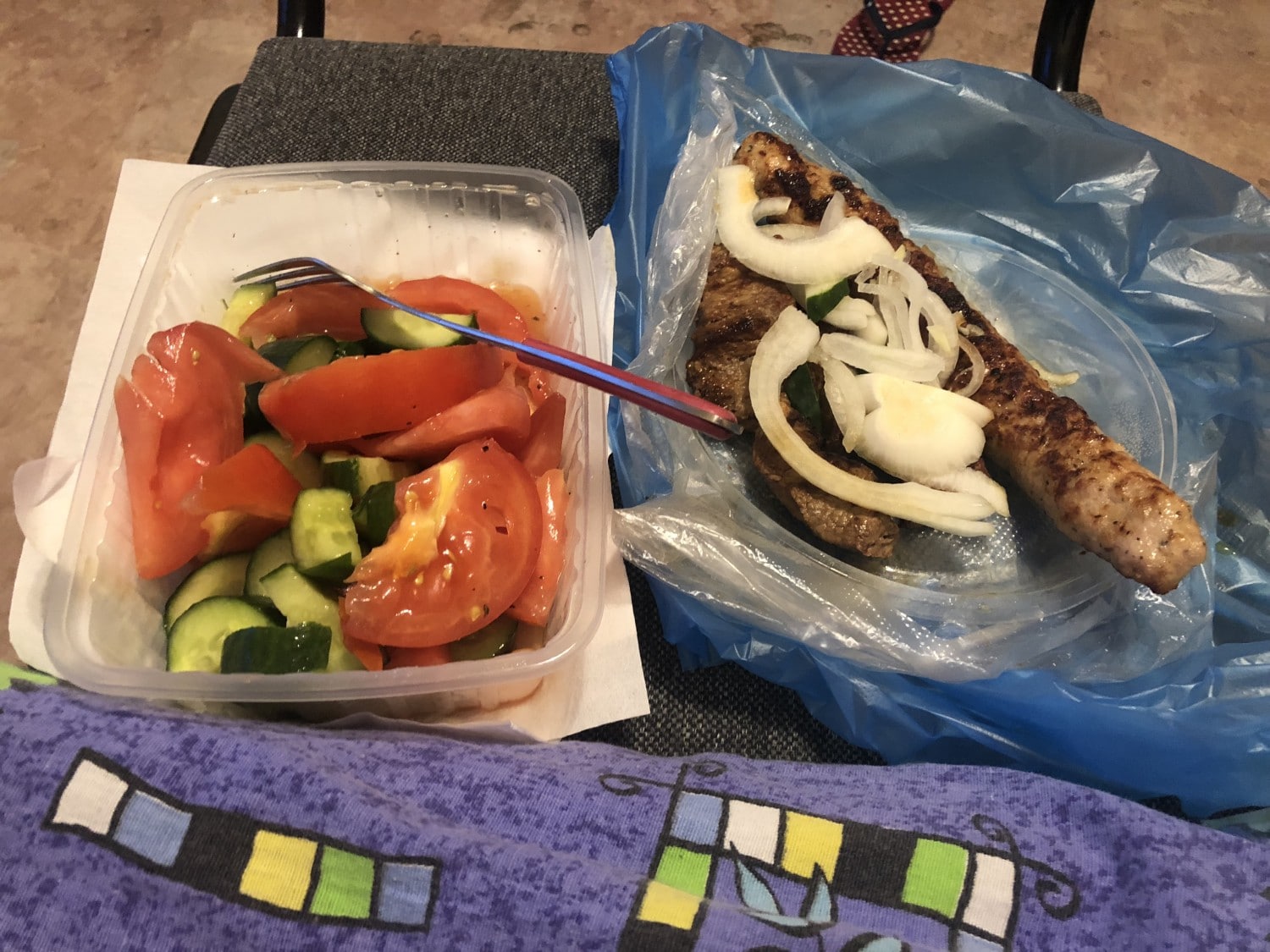
Staying Kosher in Irkutsk
Having grown up Jewish, I stopped eating pork when I was around 5, and have not eaten it since then. Coming to Irkutsk, I was very curious to see if not eating pork would be a challenge, or if it would be simple to avoid. Spending six weeks in Siberia, I have realized that a […]
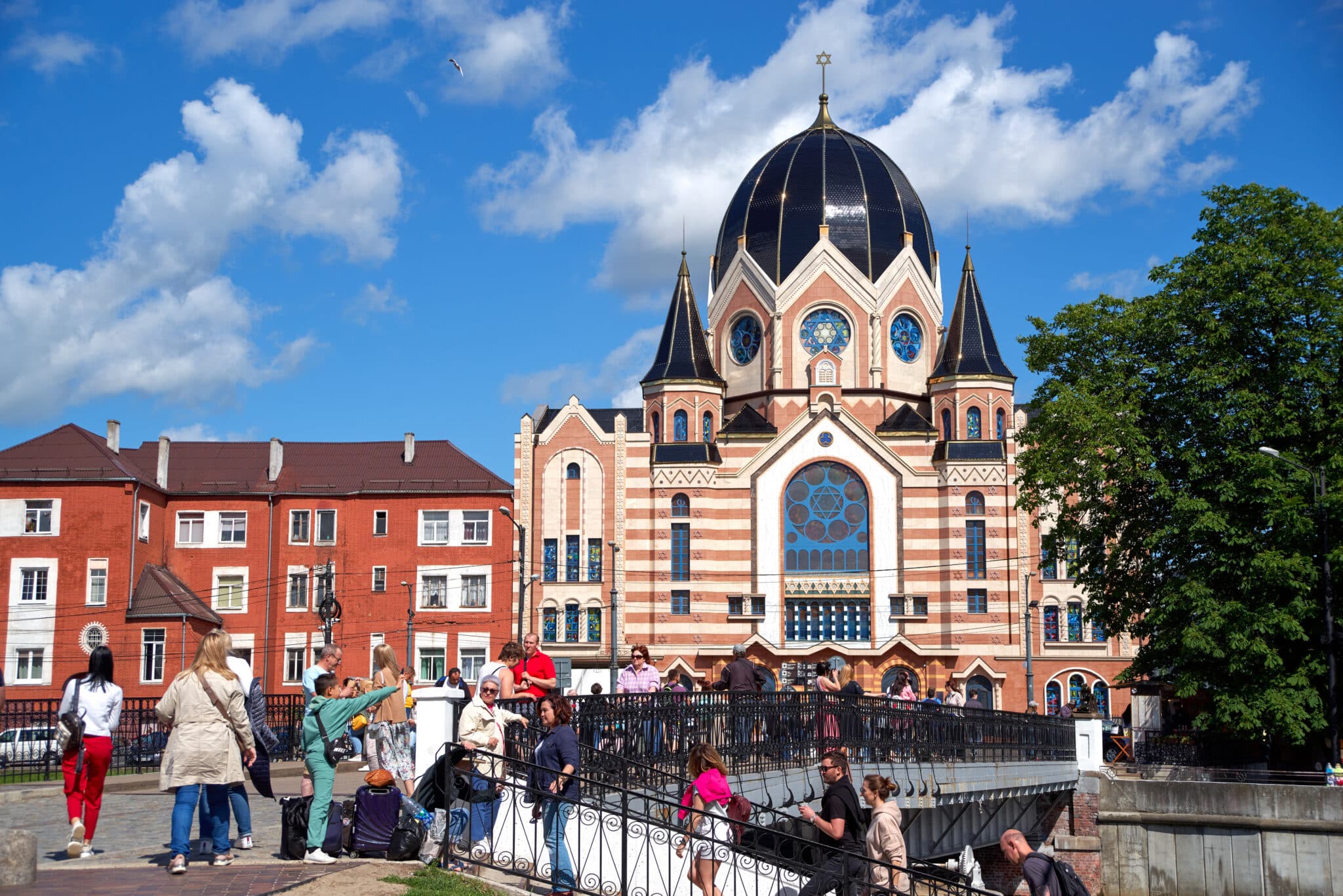
Judaism in Russia: Моя Россия Blog
In this text, Tajik blogger Roxana Burkhanova describes, in Russian, the history of Jews in the Russian Empire, the USSR, and the Russian Federation. While the resource focuses on Russia, this also includes Jews in regions which are no longer part of Russia – including Central Asia, the Caucasus, and Central and Eastern Europe. More […]

